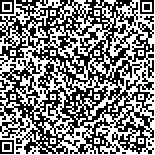下载中心
优秀审稿专家
优秀论文
相关链接
摘要

表面粗糙度是影响土壤在微波波段发射和散射辐射的主要因素之一,也是微波遥感研究与应用的重要参量。由于微波后向散射还受介电特性、穿透深度等因素的影响,在微波遥感应用中往往难以单独考虑介质表面粗糙度,给参数估算与反演带来了一定困难。在可见光、近红外波段,粗糙度作为土壤表面重要的结构参数之一,直接影响着土壤的二向反射分布特征。因此,本文尝试利用光学多角度观测信息,反演土壤表面粗糙度。基于地表二向反射几何光学模型,假设裸土像元由随机分布于平坦表面的土壤团粒组成,将团粒近似为半椭球体,建立裸露土壤表面二向反射模型,模拟不同粗糙度条件下土壤表面像元的二向反射分布特征。进一步尝试采用多角度观测数据反演模型,估算土壤团粒的几何结构参数,进而计算土壤表面均方根高度,作为表面粗糙度的衡量指标。地面实测多角度数据的初步验证结果表明,多角度光学遥感估算土壤表面粗糙度的方法是可行的。
As a primary factor determining microwave radiative emission and scattering properties, soil surface roughness plays an important role in microwave remote sensing studies. Since microwave backscatter is also influenced by dielectric property and penetration depth, retrieval of soil roughness using solely microwave remote sensing data faces great difficulties. In this study, soil surface roughness is estimated using multiangular optical remote sensing data in order to provide useful information to microwave remote sensing studies. First, a geometric-optical model is established to simulate bidirectional reflectance for bare soil surface under different roughness conditions. The model assumes that soil aggregates or clods are semi-ellipsoids with circular bottom, and a number of aggregates of clods distribute randomly within a pixel. Then the model is inverted using multiangular reflectance to retrieve structural parameters of each soil pixel. After that, root-mean-square height, as an indicator of soil surface roughness, can be estimated from structural parameters of the model. This method is validated using in situ multiangular reflectance observations. Results demonstrate that estimation of soil surface roughness using multi angular remote sensing data is an effective approach.

